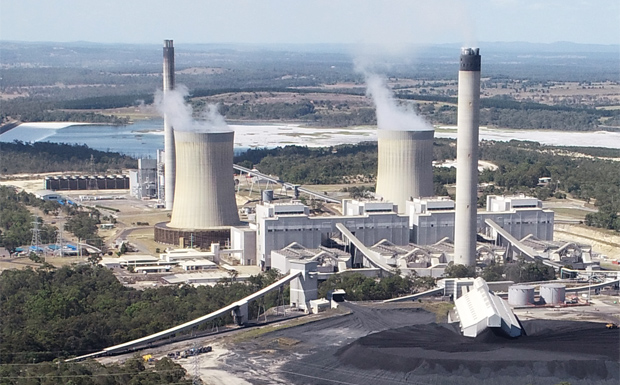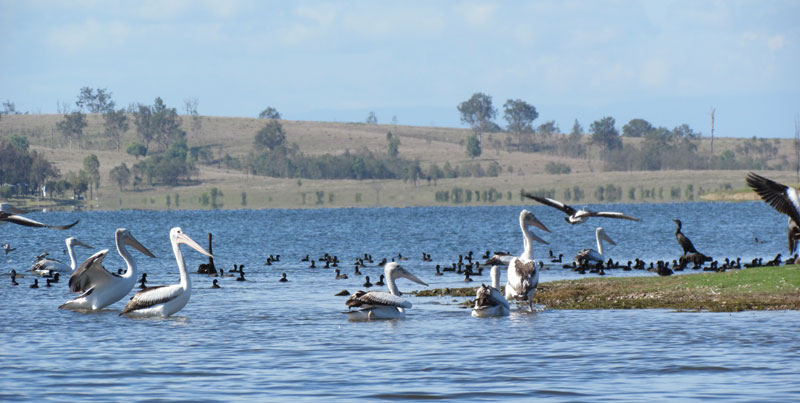1950 to present
In the 1970s, the Esk Shire followed the advice of Report of Royal Commission on Pastoral Lands Settlement (Queensland), and encouraged subdivision of rural properties to increase their rate payer base. Property was eagerly bought by developers in the Esk Shire before the additional cost of providing services to these new developments had been carefully assessed. Dairy farms were sold and in 1973 the Esk butter factory closed as government subsidies were removed and production costs increased. By 1981 the Esk Council was refusing 16 hectares subdivisions because the ‘blockies’ were now seen to be ‘detrimental to grazing for pastoral amenity in the area’ and by a mysterious inversion of logic the Council was supporting rural residential subdivision with a significantly smaller preferred minimum size. The old families were realising on their ‘land banks’. The Esk Council requested that the new highway being mooted in 1985 take up the whole of the surveyed town of Ottaba ‘to prevent developers getting and selling lots’.

Nanango Shire, on the other hand, encouraged those people with small holdings in the shire to take advantage of available bank finance at favourable rates of interest to enlarge their properties and ensure financial viability. Many bought their neighbours out and effectively halved the population of the Shire. By the late 1960’s the sawmill and the butter factory there had closed. The establishment of the Tarong Power station in the 1980’s saved Nanango Shire from an uncertain future.
Services were rationalised in all rural areas. Small state schools were closed and pupils were bussed to larger central schools. Beef producers changed from rail services to trucking cattle and the freight on timber alone did not warrant continued service. Freight train services were reduced and stations closed as trucks delivered ‘door to door’ and the cost of road maintenance skyrocketed. Young people accepted Prime Minister Whitlam’s offer of free tertiary education and the infamous ballot system provided unwilling conscripts for the Vietnam War, neither of which fostered rural development or rural diversification.
The Esk Shire, however, did have the development of the Wivenhoe Dam. Its long term value to the shire is incalculable, but the immediate cost to the shire was the resumption of the dairying township of Murrumba in the 1970s. Government buildings like the Toogoolawah Court House were encouraged, but there was no new industry of any moment. The initial tourist catch cry for Esk was “Life Style”. The developments in the southern parts of the Esk Shire were planned as ‘dormitory settlements’ for Brisbane and a Blue Care Aged facility was introduced at Toogoolawah. Beef prices had crashed in 1974 and there continued to be limited job opportunities in the shire. Breadwinners travelled elsewhere for work.
Attempts were made to conserve the physical history of the region and the National Trust identified fourteen buildings in the Esk Shire for possible heritage listing in 1976. Six were placed on the heritage register, one was later removed and three of the original fourteen considered significant have now disappeared. Nanango, with its proud boast of being the fourth oldest town in Queensland, lovingly maintains several heritage buildings including the beautifully restored Ringsfield House.
In 1989 the state government discontinued the last rail motor service on the Brisbane Valley line between Toogoolawah and Ipswich. It was replaced by a worker’s bus service daily. The northern end of the shire is served by a daily bus service from Nanango to Caboolture. There is no connecting public service for townships like Linville where the saw mill has now closed.

Census numbers in both Shires in the Brisbane Valley increased in the 1980’s & 1990’s. Prosperity was more problematic. The microeconomic reforms of both the Hawke and Keating governments that followed the floating of the Australian dollar did not favour small farmers in the Brisbane Valley. The Federal Inquiry into Competition Policy in Australia in 1992 lead to the establishment of the Australian Competition and Consumer Commission in 1995. Prior to this time the restrictive practice of establishing fixed milk quotas for dairy farmers had been deemed to be “in the public interest”, but this was not found to be so in Victoria in 1999. This state removed its restrictions on milk production and its producers were free to compete for market share in other states. Inevitably there was no choice but to deregulate the dairy industry in all Australian states.
___________________________________________________________________________
Beyond 2000
A Dairy Adjustment Program was introduced from 2000 to 2008 which was charged with providing, amongst other things, Dairy Exit Payments for those who chose to leave the industry. It was an offer many could not refuse. In the Toogoolawah district alone, only 15 per cent of the pre-2000 dairy farms remain in operation. Reports of the effects of deregulation in 2009 point to larger holdings with increased herds and increased milk production. They also note that control of the industry has shifted to processors and large retailers like Coles and Woolworths who now dictate terms to the industry and the market place.

Just before the end of the Dairy Adjustment Scheme the then Deputy Premier and Minister for Infrastructure and Planning announced a new initiative for the Brisbane Valley in January 2007. This was to be a new recreational trail built on the disused rail corridor of the Brisbane Valley Rail Line at a cost of $3.6m. It would be called the Brisbane Valley Rail Trail and provide a safe environment for walkers, cyclists and horse riders for 140 km from Ipswich to Blackbutt. It would include such amenities as horse yards, pedestal toilets, camping areas, water tanks and bike racks. Much of the original rail trail is finished, except for the section between Toogoolawah and Moore where visitors will see the heritage listed Harlin Bridge and the only rail tunnel on the line beyond Yimbun when it is finished. There are already extensions from Blackbutt to the original terminus at Yarraman as well as additional trails around the Blackbutt area. The rail trail is well used in good weather and the northern sections are particularly popular with groups of riders from pony clubs and ATHRA.
The Toogoolawah sale yards provide the only cattle sales in the Brisbane Valley in 2011. They are well patronised and additional lots can be accommodated in the Show Ground facilities nearby.
Years of drought were followed in 2011 by devastating floods in which only one life was lost in the Brisbane Valley region. As in the 1893 flood, the southern end of the Somerset region suffered badly. Submissions about recommended improvements in flood mitigation were presented to the Queensland Floods Inquiry Commission, and individual reports of conspicuous bravery, generosity and resilience have now passed into local folklore.

Before the community had recovered from the flooding, reports that a mining company, (Coalbank, currently being bought by Lodestone Energy), had applied for a permit to explore for coal over large tracts of the Brisbane River Valley were received with disbelief by those who were concerned for the river. Lodestone advised the Australian Stock Exchange that it would exclude areas within the Wivenhoe and Somerset dam catchment areas. However the permit includes the towns of Esk, Toogoolawah, Harlin, Moore and Linville where there is a telemetry rainfall station, a telemetry river station and a manual river station. The effect of coal seam gas production on useful agricultural land elsewhere has produced a storm of protest.
But as spring comes, the water birds are returning to the lakes, oblivious to the part they also play in the evolving history of the Brisbane River Valley.


